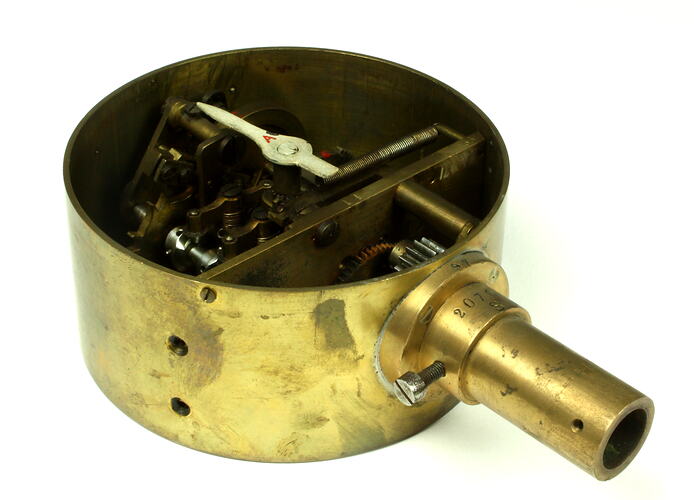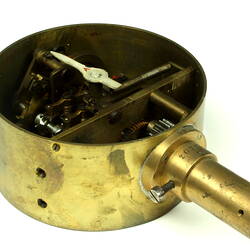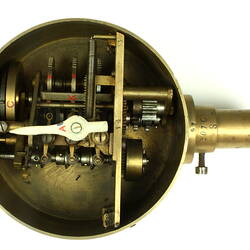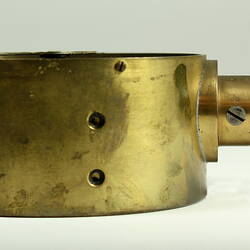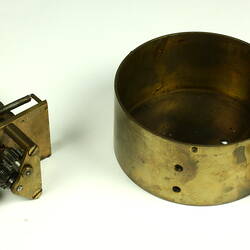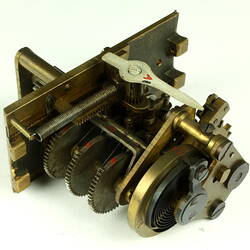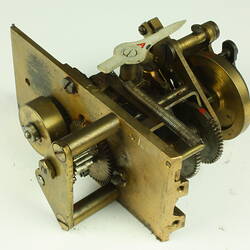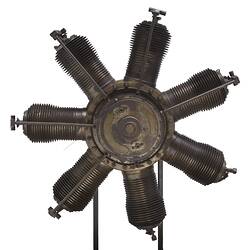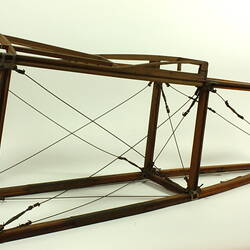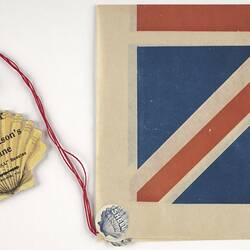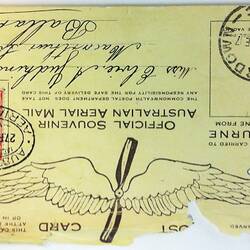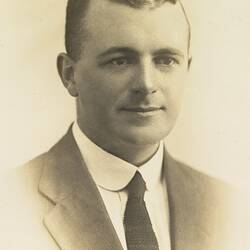Summary
Tachometer or aircraft engine revolution counter, made in France, circa 1910-1915. Contains a clockwork mechanism contented by spring-loaded rack and pinion to an indicator or pointer that rotates to show the number of revolutions per minute against a graduated scale on a dial. The dial is missing.
This instrument was associated with Australian aviation pioneer Basil Watson, who built a Sopwith-type biplane at his parent's house 'Foilacleugh', in Elsternwick, Victoria, between July and October 1916. Watson was first introduced to aviation by Harry Hawker during early 1914, and travelled to England with Hawker, where he worked as an engineer and test pilot with the Sopwith Aviation Company, and later the Imperial Army. He was severely injured in a crash after an engine failure during a test flight in June 1915, and returned to Australia 12 months later after being declared medically unfit for further military service. After constructing his own plane from scratch in little more than 3 months, Watson piloted the plane on pioneering flights to Bendigo and western Victoria. He performed many public flying acrobatic demonstrations and flew the first official airmail between Mt Gambier and Melbourne in February 1917. He was killed when a component of his aircraft failed during an aerobatic demonstration over Point Cook, Victoria, on 28th March 1917, causing the wings to collapse, plunging the aircraft into Port Phillip Bay. His death was the earliest recorded aviation fatality in Australia.
The engine revolution counter was donated to the museum by Basil's father James Isaac Watson, in 1919, together with a number of components recovered from the wreckage after the crash and other instruments believed to have been used by Basil Watson on the plane.
Physical Description
Cylindrical brass body, designed to be vertically with a stem tube attached at the bottom. A flexible revolving shaft driven by the engine crankshaft would originally have been connected to the instrument through the stem tube. The internal mechanism mounted on a rectangular brass plate can be removed from the body. The mechanism includes a spiral spring driven clockwork element, centrifugal governor and three circular tumblers with gear teeth around a portion of their perimeters. A rotating pointer or needle arm, painted white, originally indicated the engine revolution speed against a the circular scale on a dial, which is now missing.
More Information
-
Collection Names
-
Collecting Areas
-
Acquisition Information
Donation from James I. Watson, 28 Oct 1919
-
Place & Date Manufactured
-
User
Mr Basil G. Watson, Melbourne, Australia, 1916-1917
Believed to have been fitted to the Sopwith-type biplane built by Basil Watson, of Elsternwick, Victoria, in 1916. -
Inscriptions
Several numbers are stamped on the mechanism, including: '97 / 2070 / S' on the stem tube, and both '14' in the centre of the front edge on rectangular brass mounting plate and '33' near the right-hand corner of the same plate. Other capital letters painted in red are keys to explanatory text on an original display label.
-
Classification
-
Category
-
Discipline
-
Type of item
-
Keywords
Aeronautical Instruments, Aviation Pioneers, Engine Revolution Indicators, Internal Combustion Engines, Tachometers
